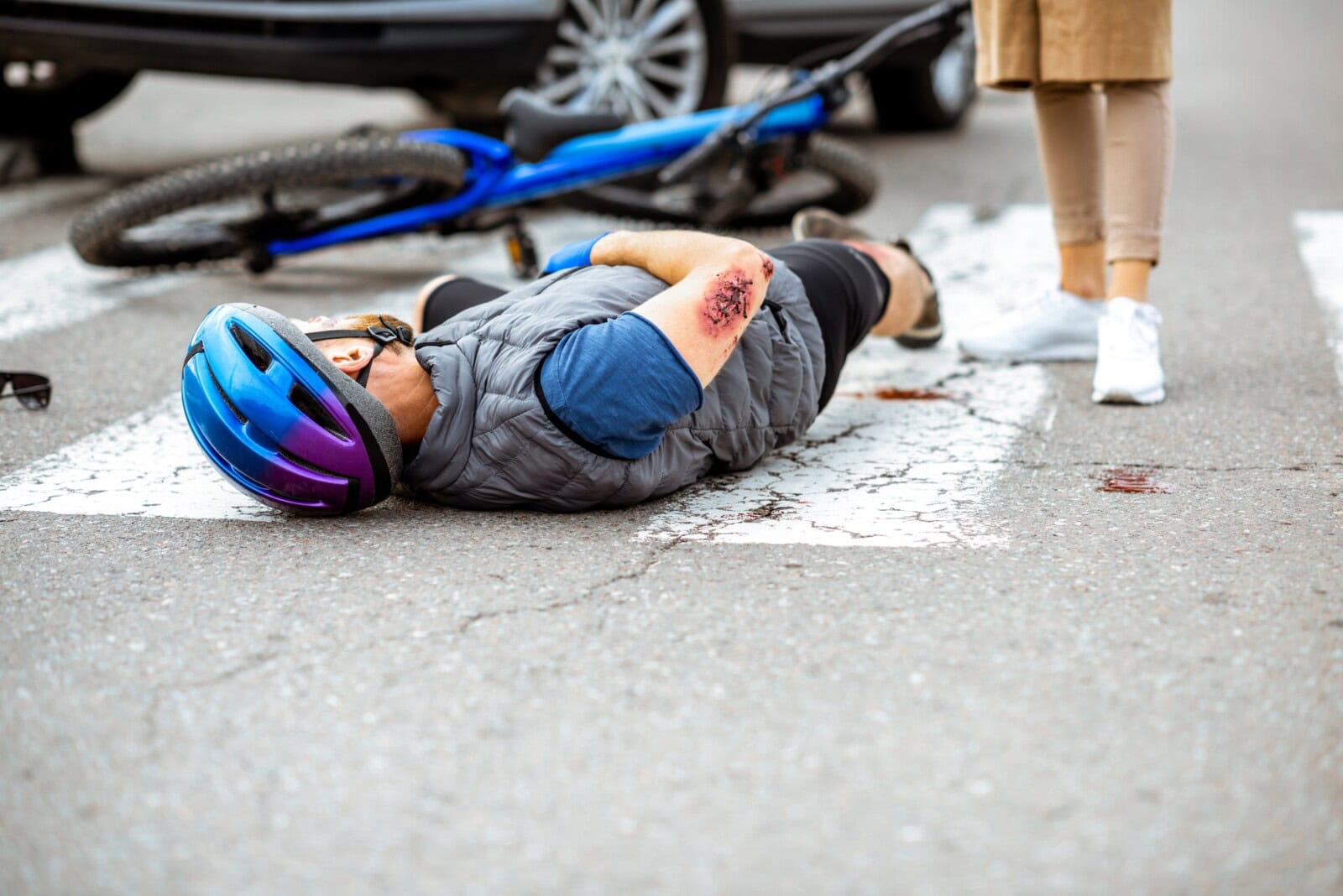Florida's warm climate and flat terrain make it an attractive destination for bicyclists, but despite its appealing features, Florida bicyclists face a growing threat as fatal bicycle crashes increase. In 2019, the state had 157 fatal bicycle crashes, making it the most dangerous state for bicyclists in the nation, according to the U.S. Department of Transportation (USDOT).
The high rates of cycling-related fatalities in Florida are a pressing concern, but there’s hope for improvement. Keep reading to learn how we work towards making Florida's roads safer for all cyclists and what to do if you’re ever in an accident.

Alarming Rates Of Cycling Deaths In Florida
As the popularity of cycling continues to rise, so does the concern over cyclist safety. The high rates of cycling-related fatalities in Florida are causing alarm among public health officials, cyclists, and safety advocates.
Most Dangerous Counties For Cyclists In Florida
Pinellas County, in particular, has seen a significant increase in bicycle accidents in recent years. In 2019 alone, Pinellas County had 768 crashes involving bicycles, resulting in 705 injuries and 11 fatalities. Miami-Dade County had the highest number of fatal bicycle crashes in the state in 2019, with 14 fatalities.
In 2019, Orange County had 621 bicycle crashes with 578 injuries and nine fatalities. Hillsborough County also had 596 bicycle crashes with 546 injuries and nine fatalities. In Broward County, there were 525 bicycle accidents with 480 injuries and five fatalities in 2019, while Palm Beach County had 429 bicycle accidents with 398 injuries and ten fatalities.
Causes Of Bicycle Accidents In Florida
One of the most common causes of bicycle accidents is an unsafe lane change by a motor vehicle. This usually occurs when a motorist fails to check their mirrors or blind spot for bicyclists before changing lanes. In such cases, the driver may collide with a bicyclist traveling in the same direction.
Another common cause of accidents is motorists' failure to watch for bicycles, especially when turning. Motorists can’t anticipate a bicyclist's speed or path, which can lead to a collision. This problem can be mitigated by motorists looking twice before turning and being aware of their surroundings, especially in areas frequented by bicyclists.
Motorists who drive too close to bike lanes or on the side of the road can pose a significant risk to bicyclists. A car entering a bike lane forces cyclists to swerve, which can lead to dangerous situations. Showing consideration for bike lanes is important, and motorists should always maintain a safe distance from these designated areas.
In the age of smartphones, texting while riding has become a significant hazard for cyclists. Distracted drivers can miss bicyclists who get in their way, leading to serious accidents. Florida law prohibits texting while driving, and it's important that drivers keep their attention on the road at all times.
Impact Of Cycling Deaths On The Community
Cycling fatalities have far-reaching implications, affecting the immediate circle of the deceased and the wider community. These impacts span emotional, psychological, economic, public health, and societal aspects.
Emotional And Psychological Impact
The sudden loss of a community member often leaves a void and causes grief and sorrow among the residents. The tragedy is all the more poignant when the victim is a well-known or beloved community figure.
The frequency of such fatal accidents can cause anxiety and fear, especially among fellow cyclists. This fear can be so strong that it discourages people from cycling, causing them to abandon an activity they may have previously enjoyed or relied on for their commute. The effects of this fear can lead to a community-wide decline in cycling, impacting overall lifestyle habits.
Economic Impact
Direct costs emerge in the form of medical bills, emergency services, and funeral expenses. However, the indirect costs are often more substantial, manifesting as lost productivity due to premature death and long-term disability resulting from accidents.
Additionally, frequent cycling accidents can lead to increased insurance premiums. The rise in premiums can financially strain households, creating additional economic pressure. This financial burden can further exacerbate the community's loss and frustration.
Impact On Community Cohesion
These accidents can create divisions between cyclists and motorists, often leading to a blame game. Such divisions can foster an environment of tension and conflict, disrupting the harmony within the community.
In the wake of cycling tragedies, communities may witness protests or activism demanding safer roads and better infrastructure. While these actions are aimed at positive change, they can also highlight the existing divisions and tensions within the community.
Initiatives And Solutions To Improve Cyclists’ Safety
Improving cyclists' safety is a multifaceted issue that requires concerted efforts from various sectors. Several initiatives and solutions can be implemented to enhance cyclists' safety.
Advocacy For Improved Infrastructure And Bike Lanes
Creating separate bike lanes is a fundamental step towards enhancing cyclists' safety. Dedicated lanes for cyclists provide a safe space for them to ride, separate from motor vehicle traffic. This reduces the likelihood of car collisions and gives cyclists the confidence to ride without fear of encroaching traffic.
Protective barriers between bike and car lanes provide a physical buffer between cyclists and vehicles, significantly reducing the risk of accidents. They can be particularly effective on busy roads or at intersections with a high risk of collision.
Improving road conditions can include ensuring roads are well-paved to eliminate potholes and other hazards that can cause cyclists to fall or swerve in traffic. Good lighting and clear road markings are also important for improving visibility and guiding cyclists and motorists.
Intersections are often hotspots for accidents between cyclists and motorists due to the complex navigation involved. Special intersection designs, such as protected intersections and bike boxes, can provide safer spaces for cyclists to cross or turn.
Education And Awareness Campaigns
Raising awareness and educating motorists and cyclists about road-sharing rules and safety measures is important. The aim is to promote respect and understanding between all road users. Some ways to raise this awareness include:
- Promote bicycle safety through educational programs and materials.
- Conduct traffic safety campaigns to increase awareness of bicycle safety.
- Encouraging bicyclists to wear helmets and obey traffic laws.
- Educate motorists about sharing the road with bicyclists.
- Provide information on safe bicycling, such as using hand signals and staying visible at night.
- Work with local communities to organize bicycle safety events and workshops.
Enforcing Traffic Laws And Penalties For Drivers
Stricter enforcement of traffic laws and regulations can deter dangerous behaviors like speeding, distracted driving, or failing to yield to cyclists. Some initiatives that can help include:
- Police should prioritize policing areas with high bicycle activity and hold drivers accountable for violations.
- More severe penalties, such as fines or license suspension, can discourage motorists from engaging in risky behavior around bicyclists.
- Work with local organizations to develop programs that educate bicyclists and motorists about how to share the road safely.
- Support legislation that strengthens bicycle safety laws and ensures that violations are taken seriously and result in appropriate consequences.
- Invest in installing bike lanes and paths to separate bicyclists from motor vehicles.
Consequences For Motorists Behind The Wheel
In Florida, motorists who cause accidents resulting in serious injury or death can face criminal charges. The severity of the charges depends on the nature of the accident, including factors such as the driver's level of negligence or recklessness. These charges can result in fines, license suspension, and even jail time.
In addition to criminal charges, motorists who cause cycling injuries can also face civil liability. This means they can be held financially responsible for the damages and injuries caused to the injured cyclist. This can include medical bills, lost income, pain and suffering, and other related expenses.
Hire A Personal Injury Lawyer Today
The aftermath can be overwhelming when you're involved in a road-related accident. Between dealing with physical injuries, emotional trauma, medical bills, lost wages, and negotiating with insurance companies, it's a stressful time when you should be focusing on recovery. That's where hiring a personal injury lawyer comes in. Weinstein Legal’s lawyers can help navigate the complex legal system, fight for your rights, and ensure you receive the compensation you deserve.
Whether you're a cyclist involved in an accident, a pedestrian hit by a car, or a driver injured due to someone else's negligence, you don't have to go through this alone. Contact the Weinstein Legal Team today to speak with a personal injury lawyer about your case. We are ready to fight for you and ensure you receive the justice and compensation you deserve.


